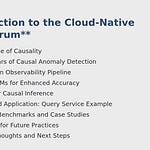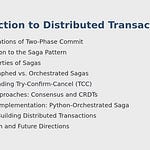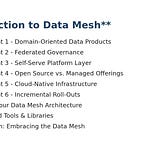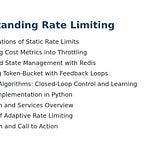You’re a seasoned backend developer, you’ve mastered SQL’s structured world, and you’ve dabbled in embeddings and vectors for your AI-driven features. But when it comes time to blend those clean, tabular filters with fuzzy similarity searches—well, your database feels like it’s hosting two parties that refuse to mingle. Enter hybrid querying, the party planner who brings these worlds together under one roof.
In today’s deep dive, we’ll explore how hybrid querying stitches vector search into your beloved relational database to unlock advanced analytics. We’ll ground our discussion in the latest research findings, break down the two dominant architectural patterns, demonstrate a concrete PostgreSQL+pgvector example in Python, and point you toward real-world tools you can adopt today. So grab your favorite mug of coffee (or tea, if that’s your jam), and let’s get started.
Building Context: Why We Need Hybrid Querying
Modern analytics often demands two capabilities:
• Traditional SQL filters: “Show me all transactions from customer_id=42 in the last 30 days.”
• Vector similarity search: “Find past transactions most like this new customer behavior embedding.”
Individually, relational databases and vector engines excel at these tasks. Together, they become a powerhouse—enabling sub-second risk monitoring in finance or personalized recommendations in e-commerce. Yet practitioners face:
• A lack of standardized performance benchmarks for hybrid queries (Key Insight 1).
• Two competing integration models, each with pros and cons (Key Insight 2).
• Fragmented documentation—especially around popular extensions like pgvector (Key Insight 4).
Our mission? Bridge these gaps with clear explanations, pattern guidance, and working code.
Deep Dive: Architectural Patterns for Hybrid Querying
Research highlights two main integration approaches:
All-in-One RDBMS Extensions
– Examples: PostgreSQL’s pgvector, MySQL vector extensions
– Pros:
• Transactional consistency—vectors live alongside your tables
• Simpler operations—no separate service to orchestrate
– Cons:
• Scaling large vector indexes can affect core database performance
• Limited index types (e.g., ivfflat, hnsw) versus dedicated vector storesDual-Store/Sidecar Model
– Examples: FAISS, Pinecone paired with your SQL store
– Pros:
• Independently scalable similarity search
• Rich indexing algorithms and tuning options
– Cons:
• Middleware or ETL required for synchronization (Key Insight 3)
• Increased architectural complexity
In practice, many teams adopt a hybrid of these: start with pgvector for ease, then spin out to FAISS or Pinecone as demands grow.
Synchronizing Embeddings: The Middleware Glue
Whether you choose an all-in-one or a sidecar, you need a mechanism to keep your relational tables and vector indexes in sync. Common patterns include:
• Filter-then-Search: Run SQL filters first, then submit the filtered rows’ embeddings to the vector engine.
• Search-then-Filter: Query the vector engine by similarity, then refine results with SQL predicates.
• Full ETL Pipelines: Schedule processes that export new embeddings from your application into both stores.
Key Insight 3 underscores that middleware or ETL is the de-facto approach. Popular tools here include Apache Airflow, AWS Glue, or custom event-driven microservices.
Conceptual Explanation: How Hybrid Queries Actually Work
At its core, a hybrid query merges two sub-queries:
A SQL predicate: Structured filters on columns (dates, categories, numeric thresholds).
A vector similarity search: A nearest-neighbor search over high-dimensional embeddings (cosine or Euclidean distance).
Workflow:
• Client issues a combined filter + similarity request.
• Middleware splits it:
– SQL store returns candidate primary keys (or full rows).
– Vector engine returns nearest neighbors for a given query vector.
• Middleware merges results (INTERSECT by ID or re-ranks with a weighted score).
• Final ordered set is returned to the client.
This fusion delivers results like “top 10 products similar to this embedding, but only in the ‘electronics’ category and priced under $200,” all in one cohesive API call.
Hands-On Example: PostgreSQL + pgvector + Python
Let’s jump into code. We’ll:
Create a
productstable with avectorcolumn.Insert sample data.
Run a hybrid query—category filter + nearest-neighbor search.
Prerequisites:
• PostgreSQL 14+
• pgvector extension installed (CREATE EXTENSION vector;)
Python Dependencies:
• psycopg2-binary
• numpy
import psycopg2
import numpy as np
# 1. Connect to Postgres
conn = psycopg2.connect(
dbname=’hybrid_db’, user=’youruser’, password=’yourpass’, host=’localhost’
)
cur = conn.cursor()
# 2. Setup: create table and index
cur.execute(”“”
CREATE TABLE IF NOT EXISTS products (
id SERIAL PRIMARY KEY,
name TEXT,
category TEXT,
price NUMERIC,
embedding VECTOR(3) -- for demo, a 3-dim vector
);
“”“)
cur.execute(”CREATE INDEX IF NOT EXISTS idx_products_emb ON products USING ivfflat (embedding) WITH (lists = 100);”)
conn.commit()
# 3. Insert sample data
products = [
(”Red Shirt”, “apparel”, 29.99, [0.1, 0.3, 0.5]),
(”Blue Jeans”, “apparel”, 49.99, [0.2, 0.1, 0.7]),
(”Wireless Mouse”, “electronics”, 24.99, [0.7, 0.2, 0.1]),
(”Bluetooth Speaker”, “electronics”, 99.99, [0.6, 0.1, 0.3]),
]
for name, cat, price, emb in products:
cur.execute(
“INSERT INTO products (name, category, price, embedding) VALUES (%s, %s, %s, %s)”,
(name, cat, price, emb)
)
conn.commit()
# 4. Hybrid Query: find top-2 electronics similar to query_vector
query_vec = np.array([0.65, 0.15, 0.25]).tolist()
sql = “”“
SELECT id, name, category, price,
embedding <-> %s AS distance
FROM products
WHERE category = ‘electronics’ -- SQL filter
ORDER BY embedding <-> %s -- vector similarity
LIMIT 2;
“”“
cur.execute(sql, (query_vec, query_vec))
results = cur.fetchall()
print(”Top 2 electronics by similarity:”)
for rid, name, cat, price, dist in results:
print(f” - {name} (${price}) dist={dist:.4f}”)
cur.close()
conn.close()Explanation:
• We created an ivfflat index on the embedding column (Key Insight 4: index tuning).
• The <-> operator computes Euclidean distance.
• We filter by category and then order by similarity in one SQL statement.
Performance Considerations & Benchmarking
Key Insight 1 warns that enterprise-grade performance data for hybrid queries is scarce. When you build your own tests, consider:
• Latency vs. Throughput: Does adding more vector dimensions drastically increase per-query latency?
• Index Tuning: Experiment with lists (ivfflat) or HNSW parameters.
• Data Cardinality: The ratio of filtered rows vs. index size.
• Caching Effects: How does your DB cache and vector store cache overlap?
Aim to build a small benchmarking framework: shell scripts that vary filters, vector dim sizes, index configs, and measure end-to-end response times.
Real-World Use Cases
Despite tooling gaps, hybrid querying drives mission-critical systems in:
• Finance: Sub-second fraud detection—combining customer transaction histories (SQL) with real-time embeddings of transaction patterns.
• Retail: Demand forecasting blending POS data (structured) with social media sentiment embeddings (unstructured).
• Healthcare: Personalized treatment plans fusing EHR records (relational) with genomic or imaging embeddings.
These deployments typically start simple—with pgvector or MySQL’s vector extension—then evolve to sidecar solutions when scale demands it (Key Insight 5).
Reference Implementations & Libraries
Here are some popular tools and services you can explore:
• PostgreSQL + pgvector
• MySQL vector extensions
• FAISS (Facebook AI Similarity Search)
• Pinecone managed vector database
• Elasticsearch k-NN plugin
Closing Stanza
Thanks for hanging out at “The Backend Developers” today! We’ve bridged SQL’s structured might with vector search’s fuzzy magic—and hopefully illuminated a clear path forward for your hybrid querying ambitions. Drop by tomorrow for another deep dive, and don’t forget to share your own benchmark results or pgvector war stories. Until then, happy indexing and may your queries always be lightning-fast!
Warmly,
The Backend Developers Team









